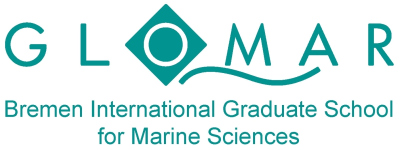- Wir über uns
- Alumni
- Ehemalige Mitarbeiterinnen und Mitarbeiter
- Stanislowski, Katja
Stanislowski, Katja
Archivierte Seite
Diese Webseite wird seit dem Ausscheiden der Kollegin / des Kollegen aus dem MARUM nicht mehr aktualisiert. |
Forschungsinteressen
- nucleation and propagation of earthquakes
- tsunamigenesis
- subduction zones
- rate and state friction modeling
- fault surface roughness analysis
Dissertationsprojekt
Frictional behavior of fault rocks from Cascadia and Alaska subduction zone - driven at plate tectonic convergence rates
Supervisor: Dr. Matt J. Ikari
Subduction zones account for most of global seismic moment release and generate damaging earthquakes as well as tsunamis with potentially disastrous effects on heavily populated coastal areas. A better understanding of the factors controlling subduction zone fault slip may entail enhanced prediction of future earthquake and tsunami events along subduction zones. Key control on fault shear strength, as well as rupture propagation and the nature of slip are the frictional properties of fault rocks. The mode of fault slip, ranging from aseismic to slow events, tremor and earthquakes, has been correlated with the response of friction to slip velocity perturbations in laboratory experiments.
My dissertation project aims to investigate on rate- and state-dependent frictional behavior of natural input samples of the Cascadia and Alaska subduction zone. For that, I conduct different friction experiments by means of direct shear devices available at MARUM. Velocity step tests performed at driving velocities of less than 10-7 m/s simulating plate convergence rates (~10-9 m/s) shed light on the rate-dependent frictional slip behavior of the material. The dependence of friction and time is examined by “slide-hold-slide” tests, which measure fault strength healing rates associated with earthquake recurrence intervals. Cohesion tests represent the direct measurement of the cohesive strength of a material. Another important component of this project is analyses of texture and roughness of the fault surfaces of previously deformed samples. This is done by confocal laser scanning microscopy. As several studies have suggested, fault surface roughness is a key factor in earthquake faulting. Results of these analyses can be directly connected with the frictional behavior of the respective sample and can lead to a more comprehensive description of slip behavior.
Lebenslauf
| since July 2017 | PhD student at MARUM, University of Bremen in the Experimental Geomechanics group |
| Nov 2015 - May 2016 | Internship at DEA Deutsche Erdoel AG, department "Formation Evaluation" |
| March - Aug 2013 | Internship at Baker Hughes Inteq GmbH, departments "Material Sciences" and "Wellbore Integrity and Pressure Management Research" |
| 2012 - 2017 |
M.Sc. Geosciences at University of Bremen (Germany) and University of Bergen (Norway) Thesis: “Analysis of spatial borehole-derived geophysical property distribution required for geomechanical modelling in the complex overburden of a Northern German gas field” (cooperation with DEA Deutsche Erdoel AG) |
| 2010 - 2017 | Student worker at MARUM in the Marine Sedimentology group |
| 2009 - 2012 | B.Sc. Geosciences at University of Bremen (Germany) |




